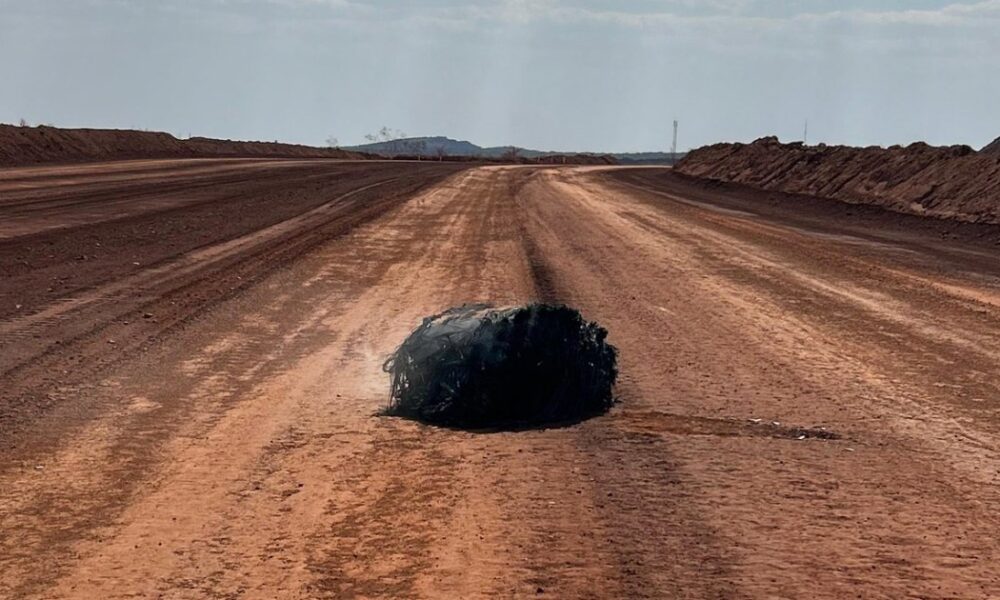A significant piece of suspected space debris has been located in a remote area of the Australian desert. The discovery, confirmed by the Australian Space Agency on Monday, occurred in the Pilbara region of Western Australia. The charred and smoldering object was found on a remote access road by workers from a nearby mine on Saturday. While the exact nature and origin of the debris remain unclear, officials suggest it is likely a spent rocket component.
The Australian Space Agency indicated that the debris may be a propellant tank or pressure vessel from a space launch vehicle. In a post on social media platform X, the agency stated, “The debris is likely a propellant tank or pressure vessel from a space launch vehicle.” Although the agency has not provided specific details regarding the object’s size or weight, it is currently collaborating with local authorities and other space organizations to thoroughly investigate the situation.
Local authorities believe the debris does not pose a threat to public safety, according to a report from Sky News. However, NBC News has not independently verified these details.
Growing Concerns About Space Debris
Space agencies and private companies often allow depleted or defunct rocket parts and satellites to burn up upon re-entry into the atmosphere as a method of disposal. Occasionally, larger components can survive this fiery descent. It is relatively rare for space debris to fall over land, particularly given that over 70% of the Earth’s surface is covered by oceans. Even more infrequently do these objects land in densely populated areas.
In recent years, the issue of space debris has gained urgency as the frequency of launches into orbit has increased. Last summer, a 90-pound piece of debris was found on a hiking trail in North Carolina, identified later as part of a service module from a SpaceX Crew Dragon capsule that had previously carried astronauts back to Earth from the International Space Station. In another incident in March 2024, a 1.6-pound piece of metal crashed through a home in Naples, Florida, later confirmed to be cargo released from the International Space Station.
Currently, tens of thousands of larger pieces of space junk, along with millions of smaller fragments, occupy low Earth orbit. These objects travel at speeds of up to 18,000 mph, posing significant risks to functioning spacecraft and the safety of astronauts aboard the International Space Station. Due to these dangers, experts have long raised concerns about overcrowding in space.
Efforts to Mitigate Space Debris
To address the growing problem of space debris, agencies like NASA have initiated research and technology demonstrations focused on debris mitigation and cleanup. The Australian Space Agency has also committed to promoting the long-term sustainability of outer space activities. In their post on X, they emphasized the importance of debris mitigation and continuously highlighted this issue on the international stage.
The discovery of this suspected space debris in Australia serves as a reminder of the ongoing challenges posed by the increasing volume of objects in orbit. As space exploration continues to evolve, the need for effective strategies to manage and reduce space debris will become increasingly critical.






